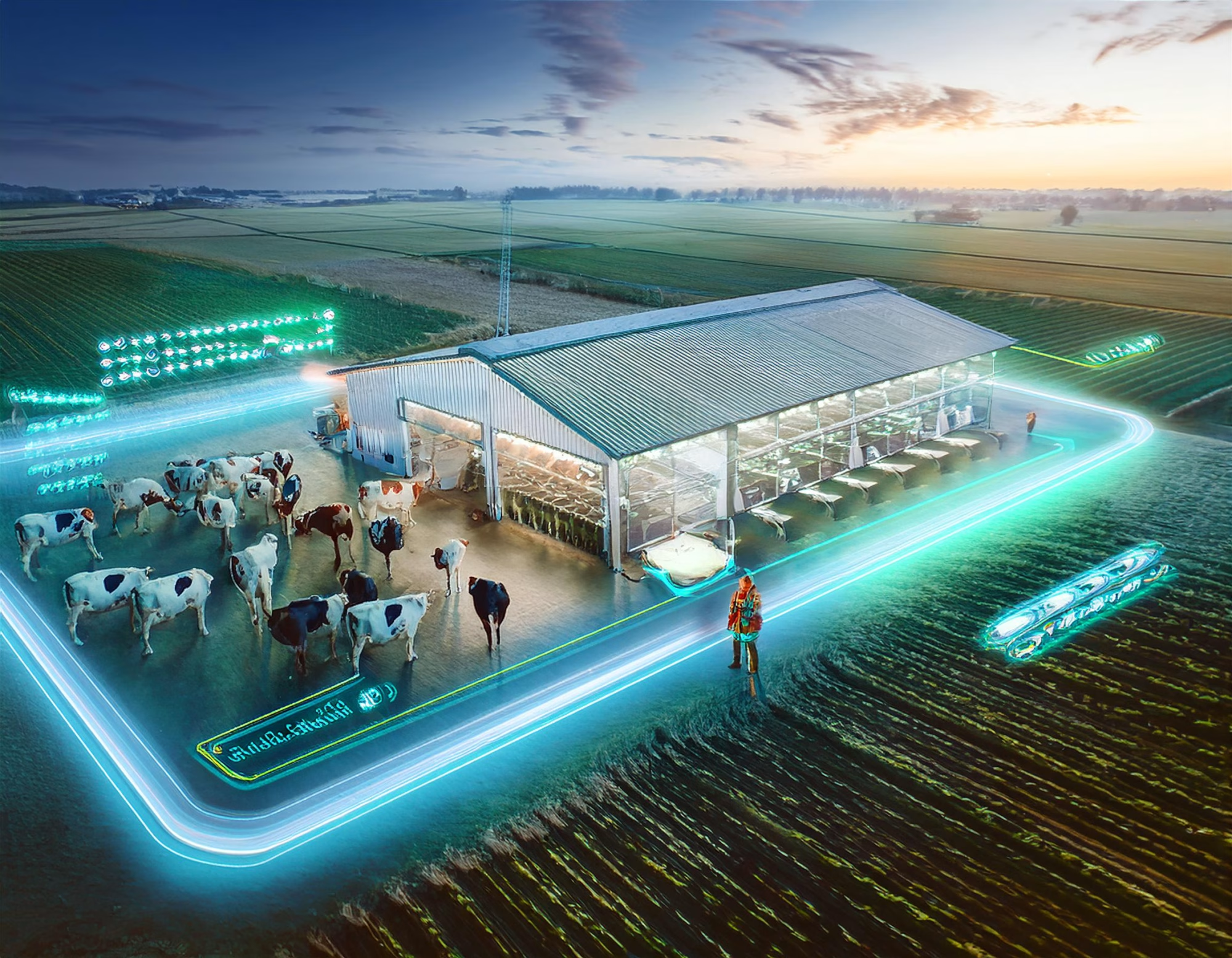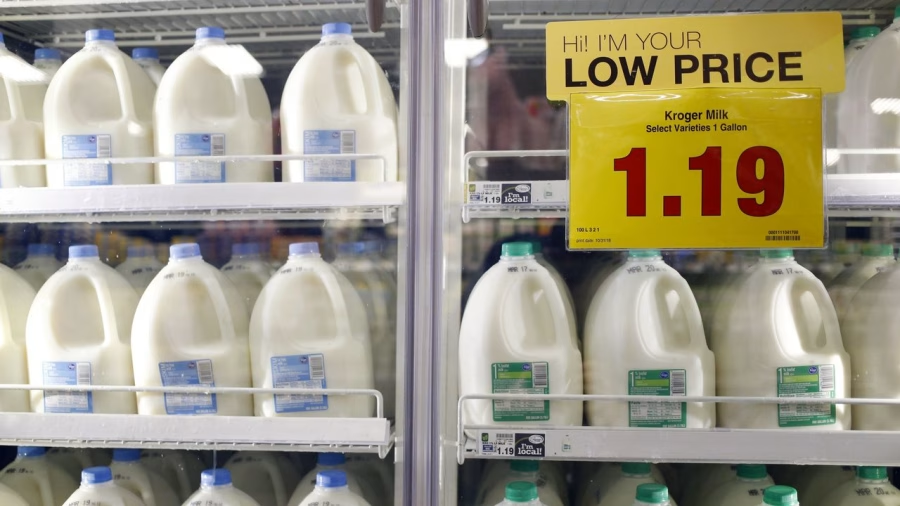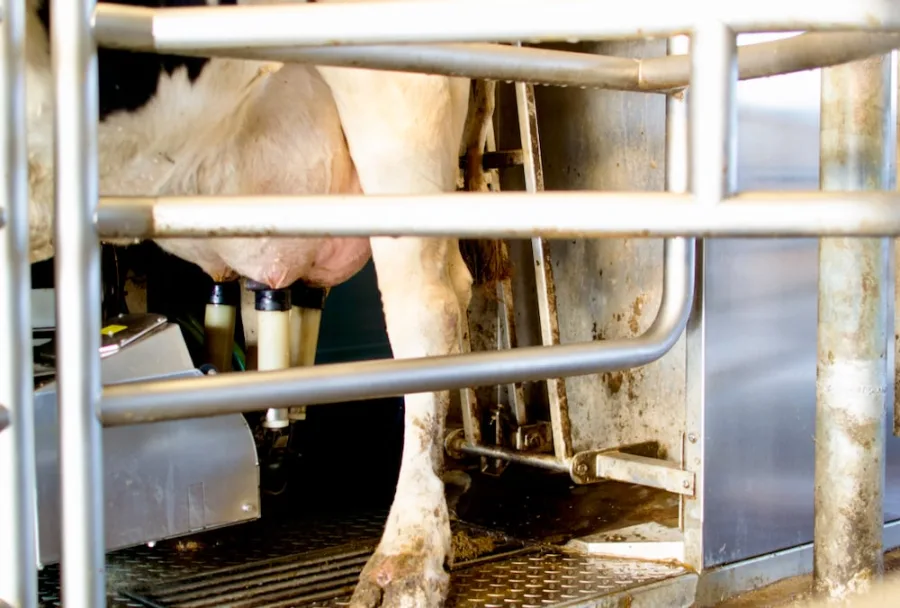Master barn planning with a focus on cow comfort, long-term goals, and efficient systems. Ready to optimize your dairy’s success and daily operations? Start here.
Envision your land transformed into a well-organized space where cows thrive and daily tasks flow smoothly. Effective planning is the key to this transformation. A well-designed barn not only houses your livestock but also ensures productivity, efficient workflow, and personal satisfaction. Planning a barn for your dairy is not just a task but a significant achievement that you will undertake as a dairy farmer. This process is crucial for the profitability and success of your operation and a testament to your dedication and vision. In short, a thoughtfully planned barn is the heart of a thriving dairy, influencing everything from cow comfort to operational efficiency. Your care and empathy for your cows are reflected in the comfort they experience in a well-planned barn.
Establishing Priorities Early in the Barn Planning Process
Setting priorities early in the barn planning process is a critical step that guides every subsequent decision. Defining what’s most important—cow comfort, data, lifestyle, capital costs, labor, running costs, or environmental impact—creates a roadmap for smooth and efficient decision-making.
Cow comfort often tops the list for many farmers. Comfortable cows are productive, and investing in their welfare yields long-term benefits. Data is another crucial factor; while advanced monitoring systems offer valuable insights, they usually come with higher capital costs. Determining where data fits your priorities will inform whether you opt for more automation or basic setups.
If lifestyle factors are a priority, decisions may lean towards automation and labor-saving technologies, reducing the daily physical strain and time commitment required. On the other hand, if capital costs are a primary concern, you might defer investing in high-cost equipment in favor of more affordable alternatives, even if it means higher running costs over time.
By recognizing labor and running costs early, you can choose systems that align with your workforce capabilities and financial projections. For example, a system with low initial expenses but high operational costs might suit a farm with abundant labor. Additionally, many farmers increasingly prioritize sustainability to reduce their environmental footprint and enhance efficiency.
Establishing these priorities makes decisions more objective and less influenced by sales pitches or seemingly good deals. This clarity speeds up decision-making and ensures consistency, leading to a well-coordinated and efficient dairy operation.
Embedding Long-Term Goals: The Cornerstone of Sustainable Barn Planning
Embracing long-term goals in barn planning is crucial for a sustainable and adaptable operation. Designing for future expansion prevents permanent structures like barns or manure pits from obstructing future growth. This strategic planning allows for easy integration of additional capacity and new technologies, ensuring today’s decisions support your long-term goals and your facility evolves with your dairy’s growth.
Continual Learning: The Lifeline of Intelligent Barn Planning
Continuous learning is a crucial aspect of barn planning. A barn is more than just a structure—it’s an ecosystem with interacting subsystems like milking, manure management, and ventilation. Understanding these elements and their interconnections through continuous education will enable you to make informed decisions that elevate cow welfare and operational efficiency.
Stay engaged in learning by reading relevant materials and keeping up with the latest trends in dairy farming. Agricultural journals and online forums are excellent resources. Real-world insights from experienced farmers are invaluable. Make it a point to visit farms, ask questions, and learn from their experiences.
Conversations with fellow farmers can provide practical wisdom that books might miss. Note their innovations, management styles, and any regrets. These discussions often uncover profound insights that can guide your planning process.
This continual quest for knowledge ensures that you make the best decisions for today while planning for future growth. A comprehensive approach to education will simplify your barn planning process, turning daunting decisions into informed choices that enhance the success of your dairy enterprise.
A Symphony of Systems: Integrating Major Barn Subsystems for Optimal Dairy Operation
The success of a dairy barn hinges on the seamless integration of six major subsystems: building, milking, manure, ventilation, stabling, and bedding. Each subsystem is critical in maintaining the herd’s health, productivity, and welfare while streamlining operations and cutting costs.
Building System: This forms the structural framework for all other subsystems. It includes the barn’s design, materials, and layout, focusing on durability and functionality. Factors like barn size, roof design, and accessibility influence the installation and efficiency of other subsystems.
Milking System: Essential to dairy production, the milking system affects the speed, hygiene, and effectiveness of milking. Options range from traditional setups to advanced robotic systems, and they directly impact milk yield and quality.
Manure System: Effective waste management is crucial for barn hygiene and environmental compliance. This system handles waste collection, storage, and disposal or recycling, enhancing cow comfort and cutting labor and operational costs.
Ventilation System: Proper ventilation is critical for air quality and temperature control. Choices include natural ventilation with fans and mechanical systems like cross-vent or tunnel systems. Good ventilation reduces heat stress, controls odors, and prevents respiratory issues.
Stabling System: This pertains to the arrangement and type of stalls or pens. Flexibility in stabling enhances cow comfort, reduces stress, and supports productivity by providing ample space and adapting to different bedding methods.
Bedding System: The bedding type—from mattresses to organic materials like sand and sawdust—affects cow health and comfort. Your choice must align with stabling, ventilation, and manure systems to optimize cow welfare and maintenance ease.
These subsystems must harmonize for optimal functioning. Design the structure to accommodate ventilation and stabling arrangements. Align the milking system’s water and power needs with the building layout. Ensure manure management integrates with stabling and bedding choices. An integrated approach ensures these subsystems support each other, creating an efficient, productive dairy barn.
Balancing Complex Subsystems: The Key to Efficient and Harmonious Barn Planning
Considering the complexities involved in each subsystem, it’s crucial to weigh every aspect meticulously to ensure overall efficiency and welfare in your barn. Cow comfort must be prioritized—comfortable cows are productive, driving profitability. Luxurious bedding like sand or mattresses elevate comfort but have higher costs. Conversely, economical options like sawdust reduce initial expenses but may increase labor and consumable costs over time.
Capital expense is critical. High-quality ventilation and advanced milking systems are capital-intensive but may lower long-term costs and boost productivity. However, if the budget is tight, prioritize essential systems without compromising quality, which can affect animal health and productivity.
Service and maintenance costs can burden your budget. To mitigate these costs, opt for reliable, easy-to-maintain systems. High-tech automation may cut labor expenses but require specialized maintenance and higher service costs.
Consumable costs, like bedding materials and feed additives, impact profitability. Systems that minimize waste and maximize efficiency are beneficial. Energy-efficient ventilation and lighting systems involve higher initial investments but can reduce long-term energy costs.
Energy costs are a significant part of your expenses, prioritizing energy-efficient choices. Evaluate energy consumption for milking, cooling, and lighting. Renewable energy options like solar panels offer long-term savings and align with sustainability goals. However, their capital outlay must be justified with long-term savings.
Labor costs are another vital consideration. Automated systems can reduce manual labor, lower expenses, and increase efficiency. However, these systems require higher training costs and specialized skills.
Informed decisions for each subsystem must be grounded in a comprehensive understanding of their interplay within the barn ecosystem. Balancing cow comfort, operational efficiency, and cost-effectiveness is crucial in sustaining your dairy operation’s viability. Articulate these considerations early to ensure every choice contributes positively to the barn’s success and sustainability.
Choosing the Optimal Bedding System: Ensuring Cow Comfort and Operational Efficiency
Choosing the right bedding system is crucial for cow comfort, hygiene, and minimizing labor and costs. Standard options include mattresses, sand, sawdust, and recycled bedding, each presenting unique advantages and challenges.
Mattresses: Comfortable and low-maintenance mattresses reduce bedding material costs, incur high initial expenses, and require regular cleaning to prevent bacteria buildup.
- Pros: Consistent comfort, low maintenance post-installation, reduced bedding costs
- Cons: High initial cost, requires regular cleaning, potential bacterial issues
Sand is excellent for cow comfort and hygiene, offers good drainage, and minimizes bacterial growth. However, it is heavy, wears down equipment, and requires specialized waste management.
- Pros: High comfort, good drainage, minimizes bacteria
- Cons: Heavy equipment wear, needs exceptional waste management
Sawdust: Cost-effective and readily available; sawdust offers good comfort but can retain moisture, increasing mastitis risk, and needs frequent replacement.
- Pros: Affordable, comfortable, easy to manage
- Cons: Retains moisture, frequent replacement, can compact
Recycled Bedding: Environmentally sustainable and cost-effective, recycled bedding’s success hinges on proper composting to prevent pathogen growth and disease risk.
- Pros: Sustainable, cost-effective, comfortable if managed well
- Cons: Quality varies, pathogen risk, needs consistent management
Evaluate each option based on your dairy’s needs, including climate, labor availability, and budget.
Choosing the Right Cow Cooling System: Tailoring Climate Control for Enhanced Dairy Productivity and Cow Comfort
The choice of a cow cooling system is crucial for ensuring cow comfort and dairy productivity. Climate is a critical factor in this decision. Cross-ventilation and tunnel ventilation systems are effective in regions with hot, dry climates. These systems move large volumes of air, reducing heat stress and improving air quality.
In temperate climates, natural ventilation with circulation fans is more suitable. This approach enhances air movement and maintains a healthy environment without the high energy costs of mechanical systems.
In humid climates, high-pressure fogging systems offer a practical solution. By releasing a fine mist, these systems provide a cooling effect through evaporative cooling, effectively reducing heat stress.
Feed lane soaking systems, which periodically release water onto feed lanes, also help. This encourages cows to stay near the feed, usually the most excellent area in the barn, thereby reducing heat stress and promoting consistent feeding behavior.
Choosing the Right Milking System: Orchestrating Efficiency, Hygiene, and Long-Term Success
The choice of a milking system is crucial in barn planning. It influences milk production efficiency, herd well-being, and overall operational success. An effective milking system enhances workflow, cuts labor costs, and maintains high hygiene standards, which are vital for milk quality and cow health. Moreover, it supports your long-term goals, ensuring scalability and sustainability.
The impact of a milking system goes beyond its primary function. It interacts with other subsystems like ventilation and bedding, affecting water usage. For example, different bedding types absorb and retain water differently, influencing the water needed for cleaning the milking system. Similarly, ventilation systems with high-pressure fogging or other cooling methods alter water usage patterns.
Harmonizing these systems determines the efficiency of the manure management system. A bedding system with high water usage increases liquid manure volume, requiring a robust handling and storage solution. Conversely, an efficient bedding and milking system reduces water and labor costs, simplifying manure management. Understanding these interdependencies ensures your barn operates as a cohesive, efficient ecosystem from the start, avoiding costly retrofits.
Maximizing Stabling System Flexibility: Adapting to Your Bedding Choices for Optimal Barn Efficiency
The stabling system’s flexibility, influenced by bedding choice, is a significant advantage during barn planning. Whether using mattresses, sand, sawdust, or recycled bedding, the stabling system can adapt to various types without substantial structural changes, allowing your facility to evolve quickly.
Understanding how bedding and stabling systems interact is crucial. For instance, sand bedding may require stalls designed for easy cleaning, while sawdust might suit other stabling configurations better. Choosing a stabling system that complements your bedding enhances cow comfort and efficiency.
Planning your layout with equipment needs in mind, such as milking parlor placements, feeder installations, or manure management tools, can lower building costs. This strategic approach minimizes future retrofits and aligns building design with equipment requirements, ensuring harmony and functionality in your barn.
Prioritizing Airflow in Barn Layout: Ensuring Optimal Ventilation for a Healthier Dairy Ecosystem
Designing your barn with airflow as a priority is essential for cow comfort and overall operational efficiency. Many make the mistake of retrofitting ventilation systems into existing barns, leading to poor conditions and higher costs.
Think of your barn as a balanced ecosystem where all systems—building, milking, manure, ventilation, stabling, and bedding—interact seamlessly. Proper airflow planning enhances these systems’ performance, ensuring a more efficient operation.
By focusing on airflow in your design, you avoid costly future adjustments and achieve a smoother, more successful dairy management experience.
The Bottom Line
Building a barn is a unique and critical task that impacts dairy profitability, operational efficiency, and personal satisfaction. Setting clear priorities, including cow comfort, data, lifestyle, capital costs, labor, operational costs, and environmental impact, is crucial in guiding decisions. Integrating long-term goals ensures preparedness for future growth and alignment with your broader vision. Continuous education helps make informed choices about complex systems—building, milking, manure, ventilation, stabling, and bedding. Designing a barn is more than construction; it’s about creating a system where each part works harmoniously. Strategic decisions today lay the groundwork for efficiency, cow welfare, and long-term success. Effective barn planning demands understanding the interconnectedness of systems and foresight for future needs. Thoughtful planning now saves time, money, and effort later. What legacy will you leave in dairy farming?
Key Takeaways:
- Identify Priorities Early: Establish your priorities (cow comfort, data, lifestyle, capital costs, labor, running costs, environmental impact) to streamline decision-making.
- Embed Long-Term Goals: Plan for a facility that accommodates future growth; this helps avoid obstacles during expansion.
- Emphasize Education: Continuous learning about barn subsystems is essential. Focus on systems that fit your management style and farm’s unique needs.
- Integrate Major Subsystems: Ensure the six major subsystems (building, milking, manure, ventilation, stabling, bedding) work cohesively for optimal functionality.
- Balance Individual Subsystems: Weigh factors like cow comfort, capital expenses, and operating costs to choose the best subsystems.
- Bedding System Choices: Select bedding materials (mattresses, sand, sawdust) that align with cow comfort and operational efficiency.
- Climate-Specific Cooling: Implement cow cooling systems that suit your local climate to enhance productivity and cow comfort.
- Efficient Milking Systems: Choose milking systems that maximize efficiency, hygiene, and long-term success.
- Adaptable Stabling Systems: Opt for flexible stabling systems that can adjust to different bedding choices effectively.
- Prioritize Airflow: Design your barn layout around optimal airflow to ensure a healthy and productive environment.
Summary:
A well-planned barn is a vital aspect of a dairy farm, ensuring productivity, efficient workflow, and cow comfort. It is a significant achievement for the farmer, reflecting their dedication and vision. Prioritizing cow comfort early in the barn planning process guides every subsequent decision. Data is another crucial factor, as advanced monitoring systems offer valuable insights but come with higher capital costs. Identifying where data fits your priorities will inform whether to opt for more automation or basic setups. Lifestyle factors may lead to decisions towards automation and labor-saving technologies, reducing daily physical strain and time commitment. Capital costs may defer investing in high-cost equipment in favor of more affordable alternatives. Balancing labor and running costs early allows for a well-coordinated and efficient dairy operation. Embracing long-term goals in barn planning is crucial for a sustainable and adaptable operation. Designing for future expansion prevents permanent structures from obstructing growth, allowing for easy integration of additional capacity and new technologies.
Learn more:
- Ensuring Calmer Calvings: Strategies for Maintaining Order in Dairy Cow Maternity Pens
- Maximizing Dairy Farm Profitability Through Enhanced Cow Laying Behavior
- Healthy Hooves, Healthy Herd: The Ultimate Guide to Reducing Cow Lameness in Transition Cows
 Join the Revolution!
Join the Revolution!
Bullvine Daily is your essential e-zine for staying ahead in the dairy industry. With over 30,000 subscribers, we bring you the week’s top news, helping you manage tasks efficiently. Stay informed about milk production, tech adoption, and more, so you can concentrate on your dairy operations.







 Join the Revolution!
Join the Revolution!









